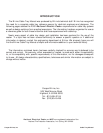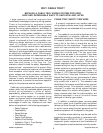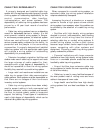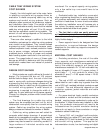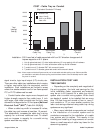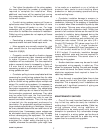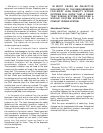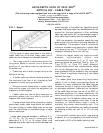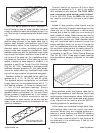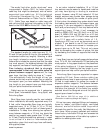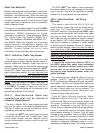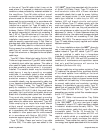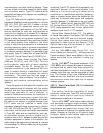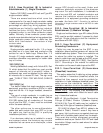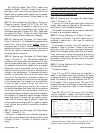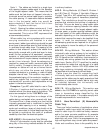
The 1999 NEC
®
added the word ‘ventilated’ in
front of trough to clear up some confusion that solid
trough is treated the same as ventilated trough. It is
not. Solid trough is recognized as solid bottom cable
tray.
Ventilated trough cable tray is often used when the
specifier does not want to use ladder cable tray to
support small diameter multiconductor control and
instrumentation cables. As no drooping of the small
diameter cables is visible, ventilated trough cable
trays provide neat appearing installations. Small
diameter cables may exit the ventilated trough cable
tray through the bottom ventilation holes as well as
out the top of the cable tray. For installations where
the cables exit the bottom of the cable tray and the
system is subject to some degree of vibration, it is
advisable to use B-Line Trough Drop-Out Bushings
(Cat. No. 99-1124). These snap-in bushings provide
additional abrasion protection for the cable jackets.
Just as for ladder cable tray, ventilated trough cable
tray will not pipe moisture into electrical equipment.
Standard widths for ventilated trough cable tray
systems are 6, 9, 12, 18, 24, 30, and 36 inches.
The standard bottom configuration for ventilated
trough cable tray is a corrugated bottom with 2
7
/8
inch bearing surfaces - 6 inches on centers and 2
1
/4 inch x 4 inch ventilation openings. Since a
corrugated bottom cannot be bent horizontally, the
standard bottom configuration for horizontal bend
fittings consists of rungs spaced on 4 inch centers.
This difference in bottom construction may be
objectionable to some owners, so be sure you are
aware of the owner's sensitivity to aesthetics for the
cable tray installation.
Channel cable tray systems (B-Line's cable
channel) are available in 3, 4, and 6 inch widths
with ventilated or solid bottoms. The 2002 NEC
®
now recognizes solid bottom cable channel.
Prior to the 2002 Code, the NEC
®
did not have
any specific provisions for the use of solid cable
channel.
Instead of large conduits, cable channel may be
used very effectively to support cable drops from the
cable tray run to the equipment or device being
serviced and is ideal for cable tray runs involving a
small number of cables. Cable channel may also be
used to support push buttons, field mounted
instrumentation devices, etc. Small diameter cables
may exit ventilated cable channel through the
bottom ventilation holes, out the top or through the
end. For installations where the cables exit through
the ventilation openings and the cable channel or
the cables are subject to some degree of vibration, it
is advisable to use B-Line Cable Channel Bushings
(Cat. No. 99-1125). These snap-in plastic bushings
provide additional abrasion protection for the cable
jackets.
Some specifiers prefer solid bottom cable tray to
support large numbers of small diameter control and
multiconductor instrumentation cables. Solid bottom
steel cable trays with solid covers and wrap around
cover clamps can be used to provide EMI/RFI
shielding protection for sensitive circuits.
Unlike ladder and ventilated trough cable trays,
solid bottom cable trays can collect and retain
moisture. Where they are installed outdoors or
indoors in humid locations and EMI/RFI shielding
protection is not required, it is recommended that
1
/4 inch weep holes be drilled in their bottoms at
the sides and in the middle every 3 feet to limit
water accumulation.
10
Vent. Channel Cable Tray
(B-Line's Cable Channel)
Aluminum Solid Bottom Trough
Cooper B-Line, Inc Cable Tray Manual
Steel Ventilated Trough



